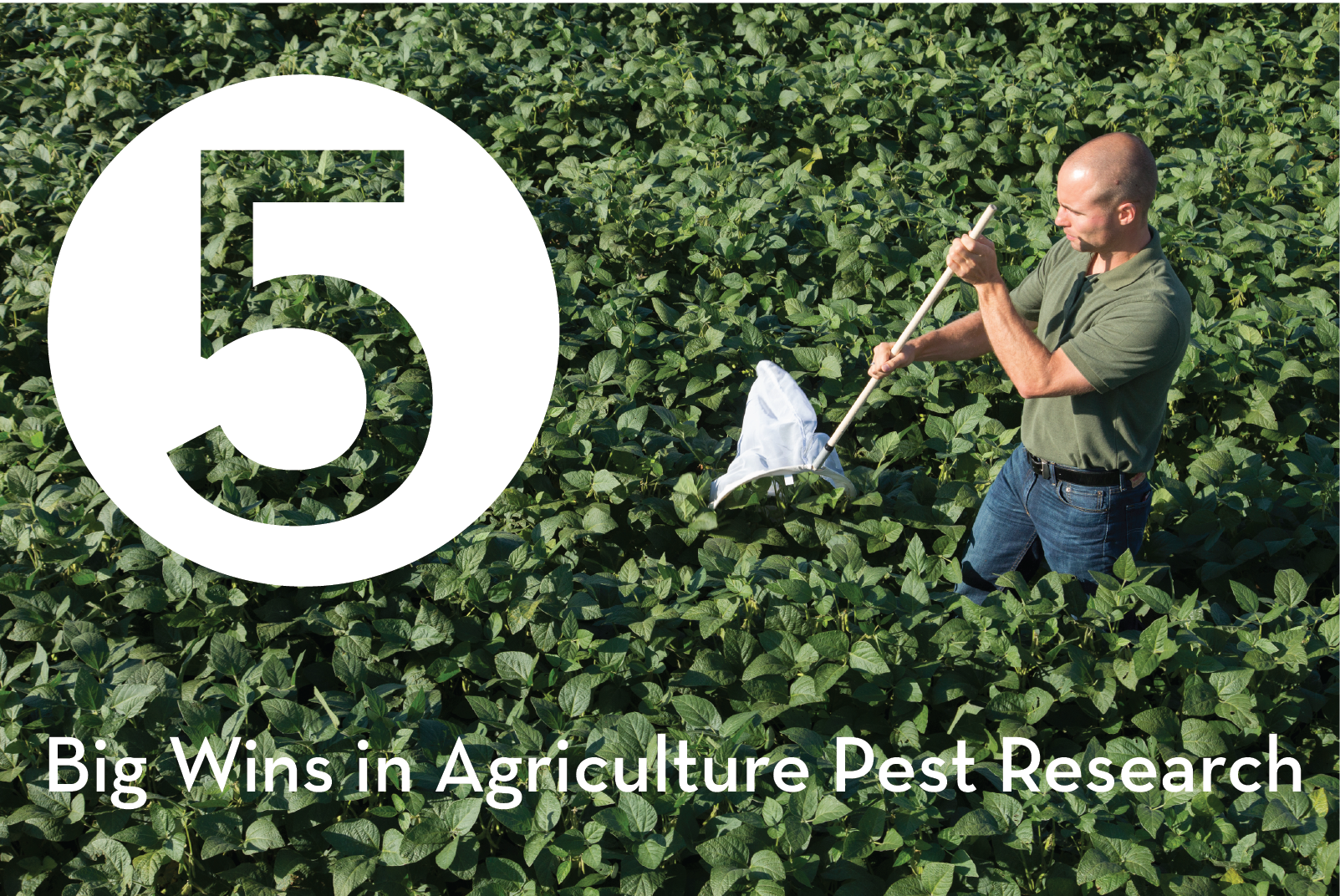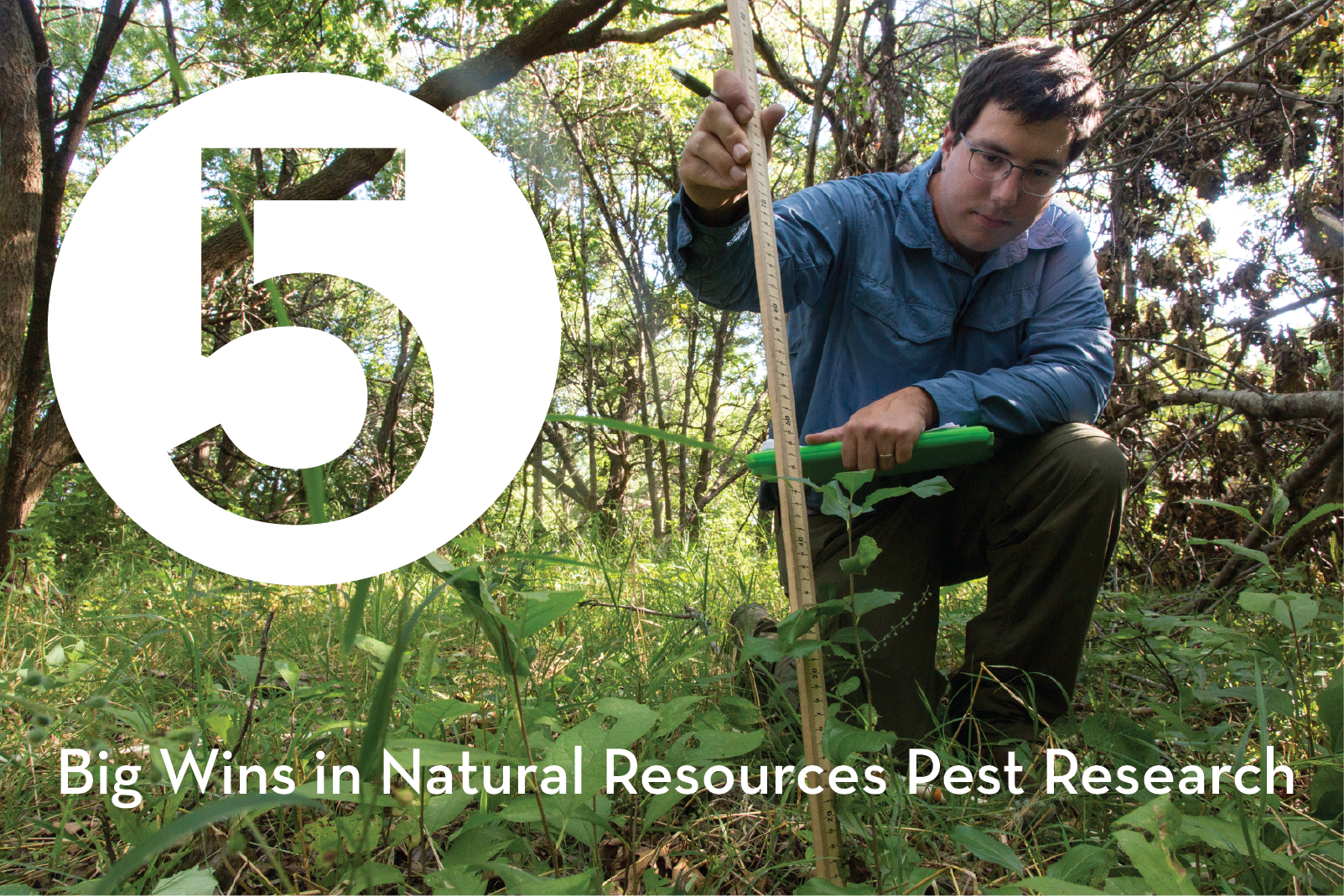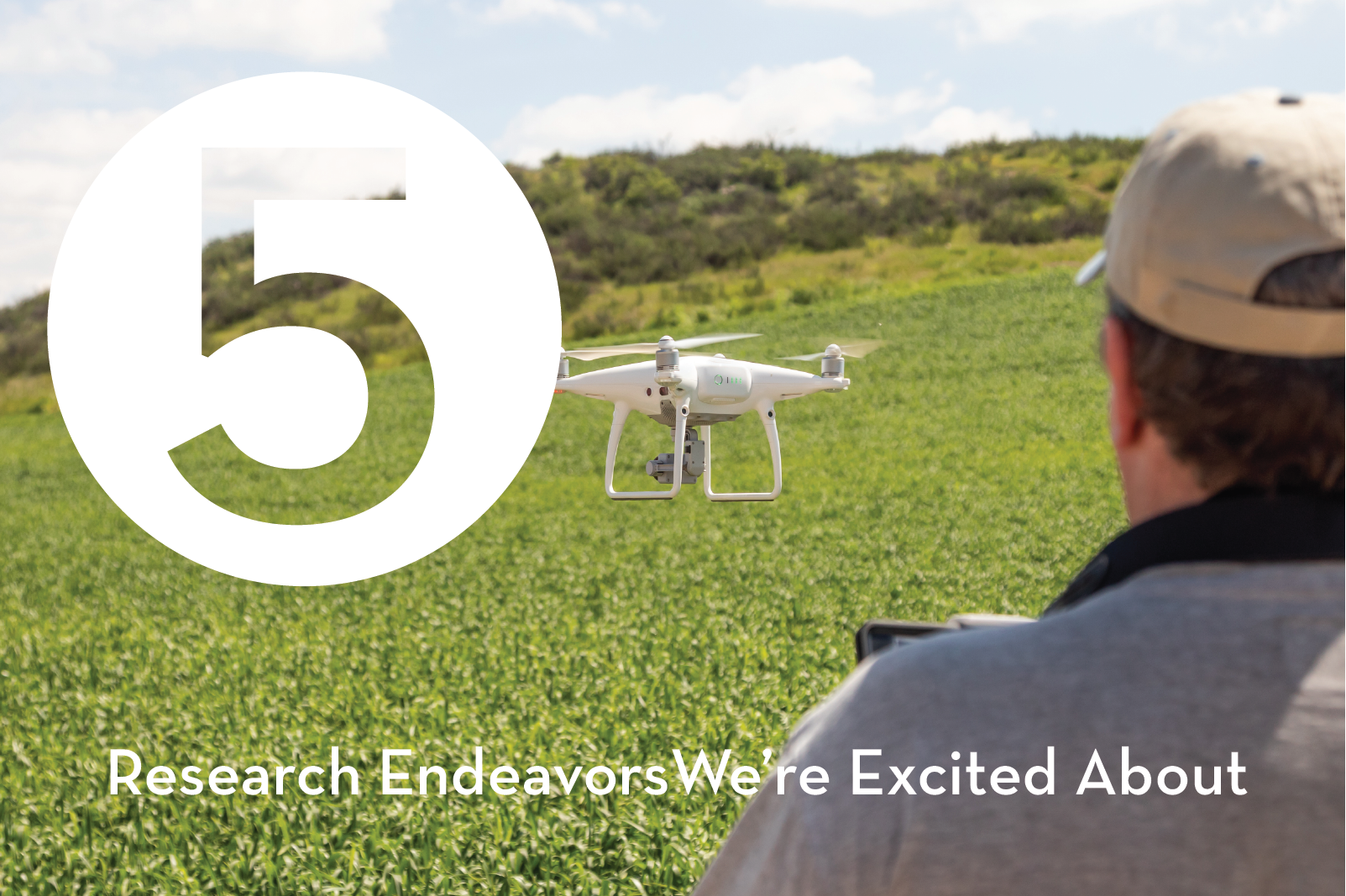
December 16, 2020
by CHRISTINE LEE | Communications Specialist, MITPPC
The Minnesota Invasive Terrestrial Plants and Pests Center at the University of Minnesota started operating in 2015 to research the prevention, detection, and control of terrestrial invasive species in order to protect Minnesota’s agricultural resources, forests, prairies, and wetlands. We're proud of what we've accomplished so far, and excited about the promise that the future holds. Thank you to the Environment and Natural Resources Trust Fund for their support of this work! Read on for research highlights, what we're excited about for the future, and how you can help.

There are many problematic agricultural pests in Minnesota. Palmer amaranth, soybean aphids, and spotted wing drosophila can decimate yields of corn, soybeans, and raspberries, respectively. MITPPC is working to reduce spread and damage by these insects. Researchers have:
- Created a new soybean line that is resistant to soybean aphids and appropriate for Minnesota growing conditions -- with more to come!
- Used drone-based remote sensing to identify damaging levels of soybean aphid
- Created a genetic testing tool to detect Palmer amaranth in seed mixes and confirm its identity in the field
Minnesota's forests, prairies, and wetlands are threatened by invasive plants like buckthorn, parasites like Dwarf mistletoe, insects like emerald ash borer, and new species like jumping worm.
We are working to prevent, detect, and control these species. Over the last 5 years, MITPPC researchers:
- Wrote guidelines to prevent the accidental movement of Lymantria dispar larvae during logging operations
- Developed methods for preventing buckthorn reinvasion using native plants
- Restored elm trees to Minnesota by propagating resistance to Dutch elm disease
- Discovered that reed canary grass in Minnesota is native
- Used drones to detect oak wilt from above and invented new technology to diagnose it on the spot


The Minnesota Invasive Terrestrial Plants and Pests Center is dedicated to using transformative science to find pragmatic solutions to terrestrial invasive species problems.
Here are five lines of research we're particularly excited about for 2021:
- Exploring biocontrol options for soybean aphid, emerald ash borer, buckthorn, and reed canary grass; and genetic biocontrol options for spotted wing drosophila
- Using state-of-the-art technology like drones, virtual reality, and biosurveillance for the identification and control of invasive species
- Researching techniques to optimize the use of goats to control buckthorn
We Need Your Help!
Terrestrial invasive species cost Minnesota about $3 billion per year. Thanks to our Center model, we can prioritize research based on the greatest threats to Minnesota, bring together interdisciplinary researchers from across the University and state, and take a broad, programmatic approach to solve these complex issues.
MITPPC needs stable, long-term support to keep operating. In the 2020 legislative session, MITPPC was recommended for a $5 million appropriation through the Environment and Natural Resources Trust Fund, a bill which ultimately never passed. Please contact your legislators and urge them to fund MITPPC in the 2021 legislative session. There’s too much at stake for Minnesota’s agricultural economy and natural resources to not take action.